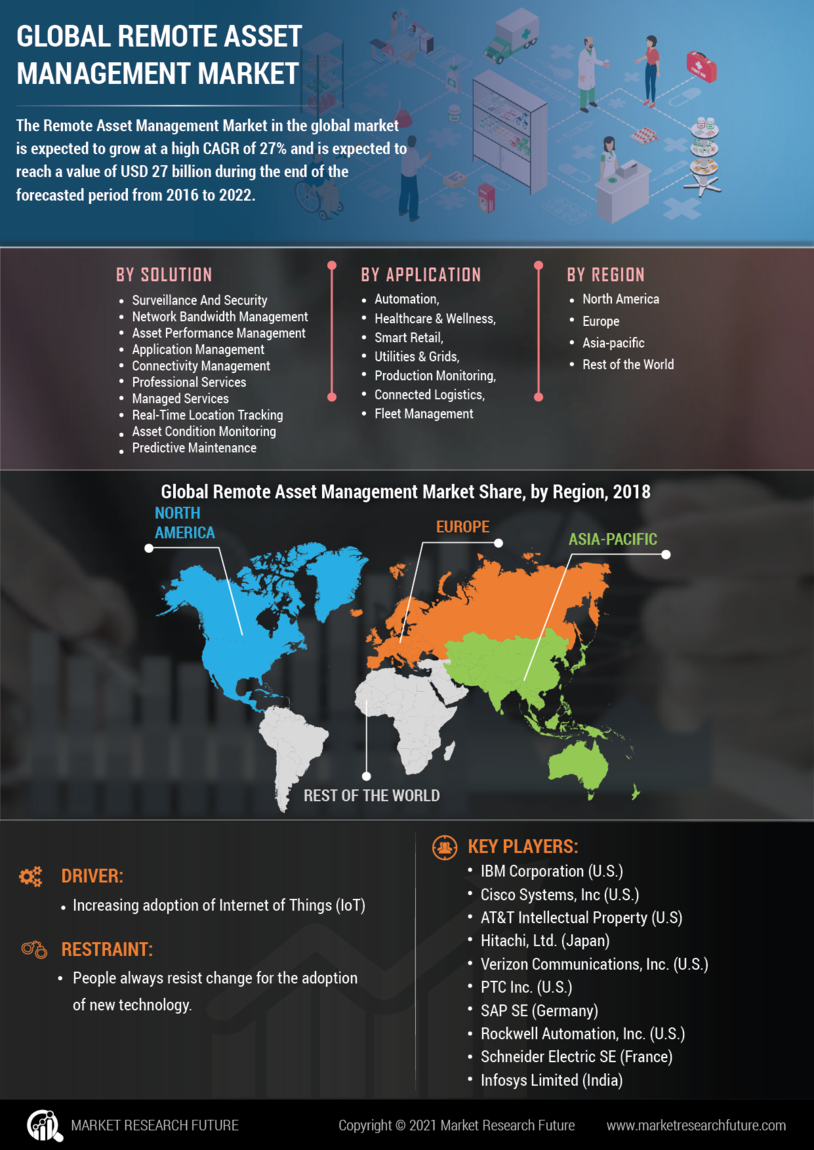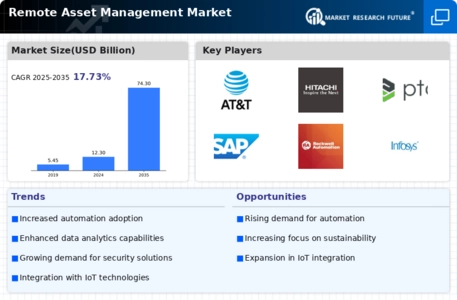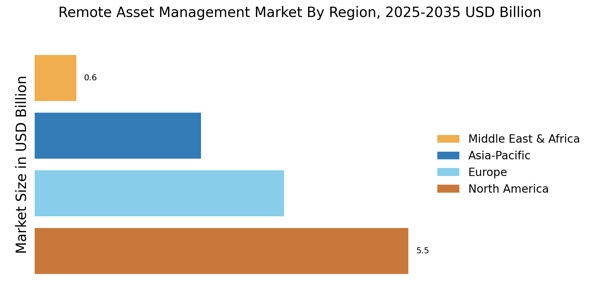Leading market players invested heavily in research and Development (R&D) to scale up their manufacturing units and develop technologically advanced solutions, which will help the Remote Asset Management Market grow worldwide. Market participants are also undertaking various organic or inorganic strategic approaches to strengthen and expand their global footprint, with significant market developments including new product portfolios, contractual deals, mergers and acquisitions, capital expenditure, higher investments, and strategic alliances with other organizations. Businesses are also coming up with marketing strategies such as digital marketing, social media influencing, and content marketing to increase their scope of profit earnings.
The Remote Asset Management industry must offer cost-effective and sustainable options to survive in a highly fragmented and dynamic market climate.
Manufacturing locally to minimize operational expenses and offer aftermarket services to customers is one of the critical business strategies organizations use in the global Remote Asset Management industry to benefit customers and capture untapped market share and revenue. The Remote Asset Management industry has recently offered significant advantages to the manufacturing industry. Moreover, more industry participants are utilizing and adopting cutting-edge technology has grown substantially.
Major players in the Remote Asset Management Market, including IBM Corporation (US), Cisco Systems Inc (US), AT&T Intellectual Property (US), Hitachi Ltd. (Japan), Verizon Communications Inc. (US), PTC Inc. (US), SAP SE (Germany), Rockwell Automation Inc. (US), Schneider Electric SE (France), and Infosys Limited (India), are attempting to expand market share and demand by investing in R&D operations to produce sustainable and affordable solutions.
AT&T, Inc. is a multinational corporation that provides telecommunications, media, and technology services. The Xandar section offers advertising services. The firm was established in 1983 and has its headquarters in Dallas, Texas. It works in four divisions: Communications, Warner Media, Latin America, and Xandr. The Communications section provides services to companies and customers in the United States and its territories and enterprises worldwide. In reaction to COVID-19, AT&T permitted various public safety organizations nationwide to access the FirstNet App catalog in March 2020.
It has aided in handling and dealing with crises in major and minor communications encountered in daily life.
Cisco Systems, Inc. is an IT and communications firm that designs, manufactures, and sells Internet Protocol-based networking devices and services. The company operates in three regional segments: North America, EMEA, and Asia-Pacific. Switches, NMI & Modules, Routers, Optical Communication, Network Points, Next-Generation Firewalls, Sophisticated Malware Protection, VPN Clients, and Web Security are among its product categories. Sandra Lerner and Leonard Bosack formed the firm on December 10, 1984, headquartered in San Jose, California. Cisco introduced an innovative Cisco Validated Design (CVD) for distant and mobility asset solutions in January 2019.
This will aid in creating new revenue streams from thousands of distributed assets with lower running costs.


















Leave a Comment